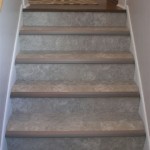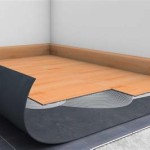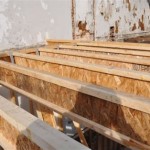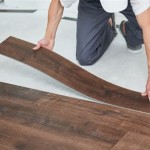Can You Use Concrete Slab As Floor?
Concrete slabs are a versatile and durable building material often used for foundations, patios, and driveways. But can they also be used as floors? The answer is a resounding yes, with numerous benefits and considerations to keep in mind. This article explores the feasibility of using concrete slabs as floors, delving into the advantages, disadvantages, and essential factors to consider.
Advantages of Using Concrete Slabs as Floors
Concrete slabs offer several advantages when used as flooring, making them a popular choice in various residential and commercial construction projects.
1. Durability and Longevity
Concrete is renowned for its exceptional durability and longevity. When properly installed and maintained, concrete slabs can withstand heavy foot traffic, furniture weight, and even minor impacts. This inherent robustness makes them an ideal choice for high-traffic areas and spaces where longevity is paramount.
2. Versatility and Adaptability
Concrete slabs are highly versatile and adaptable, offering a range of finishing options to suit different aesthetics and functional requirements. They can be stained, polished, painted, or covered with tiles or other flooring materials. This adaptability allows for seamless integration with various interior design styles.
3. Cost-Effectiveness
Concrete slabs are generally considered a cost-effective flooring solution, especially when compared to other materials like wood or tile. Their durability and low maintenance requirements contribute to their long-term affordability.
4. Fire Resistance
Concrete is inherently fire-resistant, making it a safe and secure flooring option, especially in areas with high fire hazards. This characteristic is particularly important in commercial buildings and high-rise structures.
Disadvantages of Using Concrete Slabs as Floors
While concrete slabs offer numerous advantages, they also have some drawbacks to consider before making a decision.
1. Cold and Hard Surface
Concrete is naturally cold and hard, which can be uncomfortable to walk on, especially in colder climates. Insulation and appropriate flooring treatments are crucial to mitigate these issues.
2. Susceptibility to Cracks
Concrete can crack over time, especially in areas prone to temperature fluctuations or seismic activity. Proper installation techniques, reinforcement, and expansion joints help minimize the risk of cracking.
3. Difficulty in Repairing
Repairing cracks or damage in concrete slabs can be challenging and time-consuming. It often requires professional assistance, potentially adding to the overall cost of maintenance.
4. Limited Acoustic Insulation
Concrete is a relatively poor sound insulator, meaning that noise can easily travel through it. This can be a concern in multi-story buildings or areas where noise reduction is crucial.
Factors to Consider Before Using Concrete Slabs as Floors
Several factors should be carefully considered before deciding to use concrete slabs as floors.
1. Climate and Temperature
The local climate and temperature fluctuations can affect the performance and durability of concrete slabs. In cold climates, insulation and heating systems are essential to mitigate the coldness of the surface. In hot climates, reflective coatings or cooling systems may be required to prevent excessive heat build-up.
2. Intended Use and Traffic
The intended use of the floor and the anticipated traffic volume play a key role in determining the appropriate thickness and reinforcement of the concrete slab. High-traffic areas require thicker and more robust slabs to ensure longevity and structural integrity.
3. Budget and Aesthetics
The budget and desired aesthetic are important factors to consider. Concrete slabs come in various finishes and can be customized to fit different design schemes. Cost-effectiveness and desired aesthetics should be balanced when choosing a flooring solution.
4. Existing Infrastructure
The existing infrastructure, such as the foundation and framing, should be evaluated to ensure compatibility with the concrete slab flooring. Consult with a structural engineer to ensure proper support and load-bearing capacity.
Conclusion
Using concrete slabs as floors is a viable option, offering durability, versatility, and cost-effectiveness. However, careful consideration of the advantages, disadvantages, and relevant factors is essential to ensure successful implementation. By addressing concerns related to temperature, noise, and structural integrity, concrete slab flooring can provide a durable and functional foundation for various spaces.

Concrete Free Slab Greenbuildingadvisor

Elevated Concrete Slab First Floor

Concrete Slab Floor And How To Make One By Hand Mixing The

This Is Hard To Do Building New Framed Floor Over Concrete

What Is The Best Flooring For Concrete Slabs 50floor
Q A Solid Wood Floors Over Concrete Slabs Jlc

Breakfast Room Progress Plywood Subfloor Installed Over Concrete Slab For Nail Down Solid Hardwood Flooring Addicted 2 Decorating

Installing A Hardwood Floor Over Concrete Slab American Information Center

Concrete Slab Floors Yourhome

Insulating Floors Above Ground Bearing Concrete Slabs
See Also







